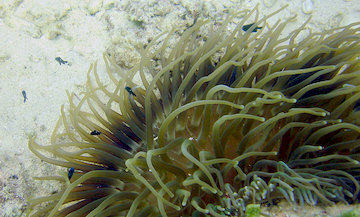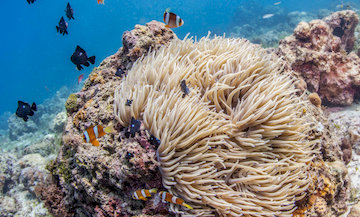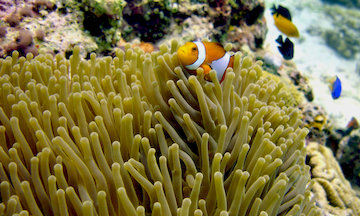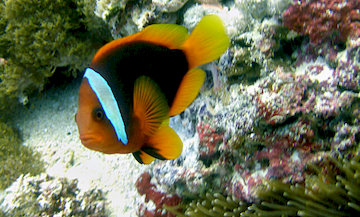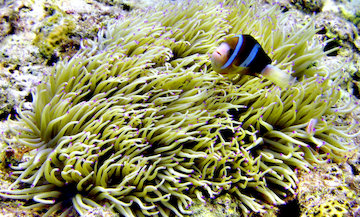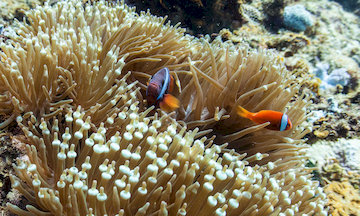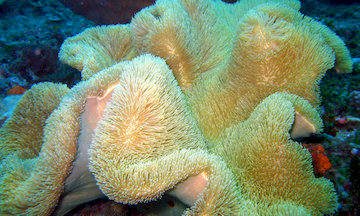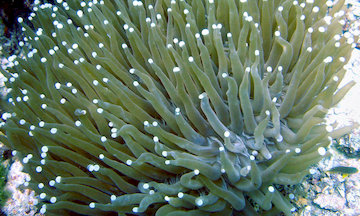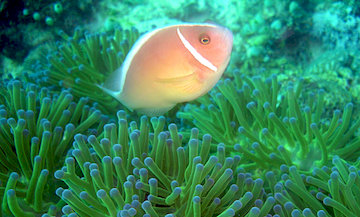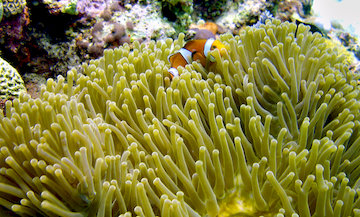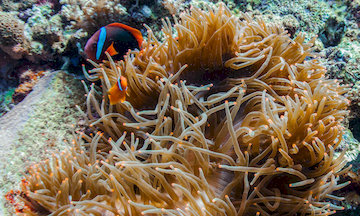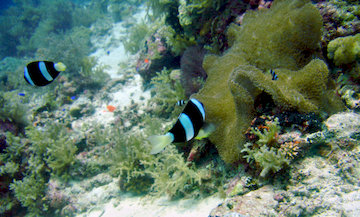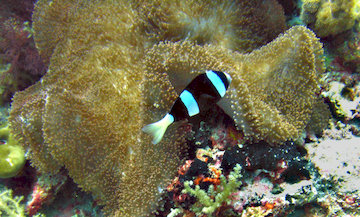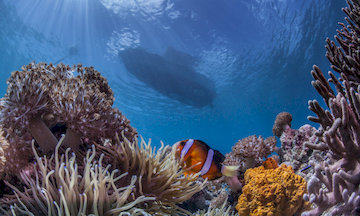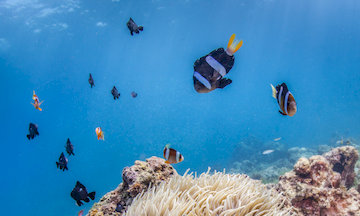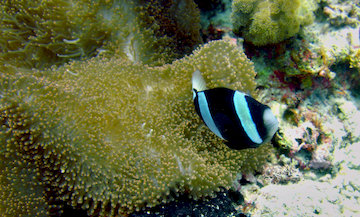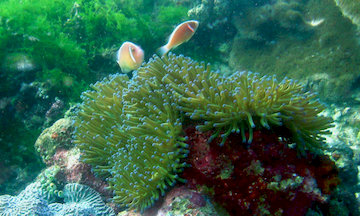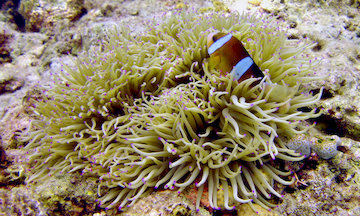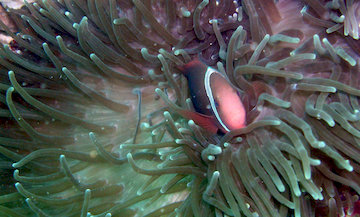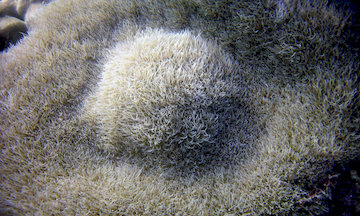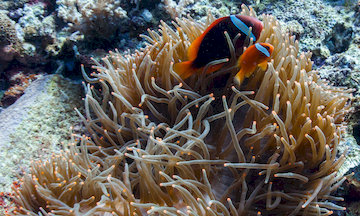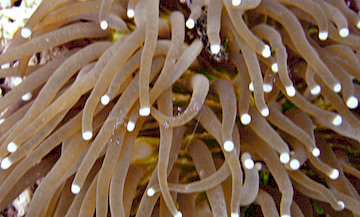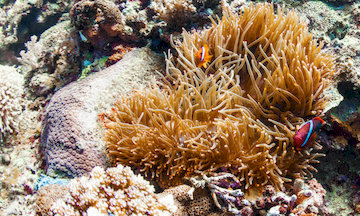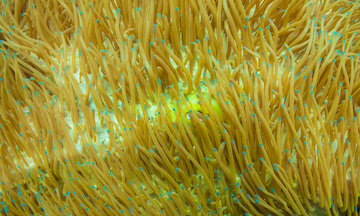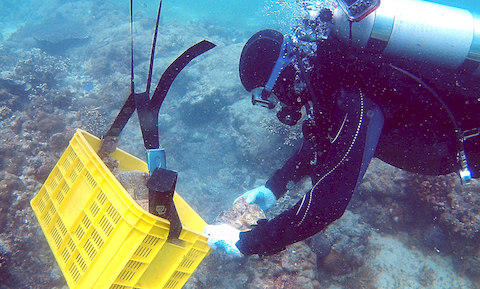Clownfish and Sea Anemone: Myths and Facts
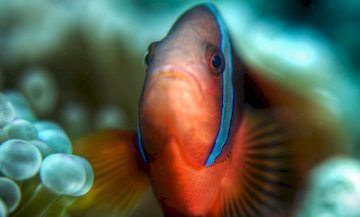 Most people believe: When a clownfish attacks, they are protecting their host sea anemone. After all, a clownfish and its sea anemone appear to have a symbiotic relationship. It appears as thought the clownfish protects its sea anemone from its predators, while the highly-venomous sea anemone protects the clownfish from its predators.
Most people believe: When a clownfish attacks, they are protecting their host sea anemone. After all, a clownfish and its sea anemone appear to have a symbiotic relationship. It appears as thought the clownfish protects its sea anemone from its predators, while the highly-venomous sea anemone protects the clownfish from its predators.
Well, actually, that’s a common misconception. Clownfish are no funnier than any other fish
. Marlin, Finding Nemo.
Unfortunately, this is a misconception. People believe this because:
1. If a predator gets too close to a sea anemone, its resident clownfish will attack.
2. The highly-venomous sea anemone does not kill its resident clownfish.
What are Clownfish (also known as Anemofish)?
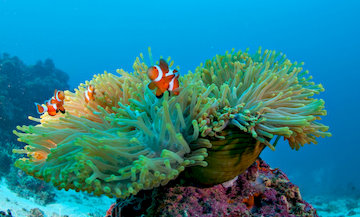 Clownfish are most easily recognized as being orange with white stripes. However, not every species of clownfish looks like this. That is a different misconception. You can find them in a variety of colors, patterns, and sizes.
Clownfish are most easily recognized as being orange with white stripes. However, not every species of clownfish looks like this. That is a different misconception. You can find them in a variety of colors, patterns, and sizes.
For their own protection, clownfish, or anemonefish, live in shallow, coral reefs. They thrive in tropical waters, so they are very common here in the Philippines. You will probably see them at every dive site around, and on every diving safari from, our dive centers in Boracay, Panglao, Bohol, and Mactan, Cebu.
Anemonefish develop a sugary coat of mucus on their body. They build this mucus layer by rubbing cautiously, at first, and gradually more energetically against the sea anemone’s tentacles. It is possible that this resultant mucus confuses the sea anemone so that the sea anemone does not know that the anemonefish could be a food source. Or, it is possible that the sea anemone thinks that the anemonefish is part of itself. Either way, the sea anemone does not sting and kill the clownfish and the clownfish gets its immunity by continuously rubbing its boddy against the anemone.
What are the facts about the clownfish symbiotic relationship with a sea anemone
First of all, the sea anemone is not protecting its clownfish at all. If it could eat its clownfish, it would. In fact, most species of sea anemone eat most species of clownfish. It is the clownfish that is protecting itself by maintaining its aforementioned layer of mucus.
Moreover, each species of clownfish adapts better to a certain species of sea anemone than to others. If a clownfish attempts to enter a sea anemone too quickly, before it has adapted to the venom by building up its mucus layer, the result could be fatal.
When one of the sea anemone’s predators approaches, the clownfish indeed attacks, but that is simply because it is territorial. For example, a passing butterflyfish may attempt to eat the host sea anemone’s tentacles. The resident clownfish will attack the butterflyfish, but only because of this territoriality. For this same reason, the clownfish attacks its host’s parasites.
Clownfish attack and defense system
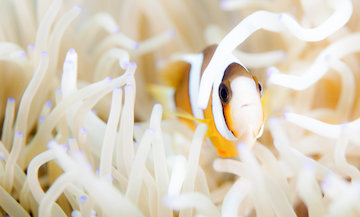 Scuba divers may be amused when clownfish approach and swim around, but the clownfish are actually trying to scare them away.
Scuba divers may be amused when clownfish approach and swim around, but the clownfish are actually trying to scare them away.
The clownfish also uses its bright colors to draw its predators to the sea anemone’s venomous tentacles. This is not intended to feed the sea anemone, even though that is a consequence. The clownfish simply wants its predator to be dead. The clownfish “bathing” in the sea anemone’s tentacles may make it appear that the venomous tentacles are harmless, but that is just another part of the trap.
A clownfish does not have, and does not need to have, a symbiotic relationship with a sea anemone. It only uses the sea anemone for its protection.
In short, a clownfish lives in a sea anemone for its protection. If you separate a sea anemone from its clownfish, depending the species, it fares poorly. However, if you separate a clownfish from its sea anemone, it can potentially find another sea anemone, slowly build up a new mucus layer, and thrive.
Hermaphrodite Clownfish
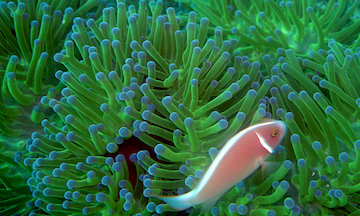 A little-known fact about clownfish is that they change their gender. A sea anemone typically has one female clownfish, one dominant male clownfish, and a few prepubescent males.
A little-known fact about clownfish is that they change their gender. A sea anemone typically has one female clownfish, one dominant male clownfish, and a few prepubescent males.
If something happens to the female, the dominant male becomes the female, and the next largest clownfish becomes the dominant male. The others remain prepubescent males.
This is done to prevent territoriality and fighting among multiple aggressive males, thus enhancing the survivability of the group. And when an individual changes sex, it's called sequential hermaphroditism.
TL/DR; What do you need to know about clownfish?
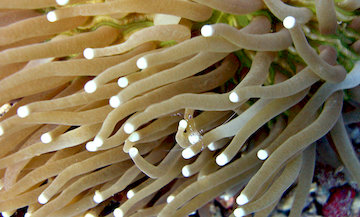 In short what do you need to know about clownfish?
In short what do you need to know about clownfish?
- Without a host sea anemone, and in the absence of predators, a clownfish can still thrive; it only uses the sea anemone’s venomous tentacles for protection.
- A clownfish can adapt to another sea anemone or another species of sea anemone; admittedly, this takes time, as the clownfish need to slowly build up a new mucus layer.
- “Bathing” in the tentacles to build up the mucus layer consumes energy; in a predator-less environment, a clownfish consumes less energy and is thus better off without a host sea anemone.
- Rubbing its body in the tentacles hurts the clownfish; if the relationship was really a symbiosis the clownfish should not get hurt.
- If a clownfish selects the wrong sea anemone species as its host, it has to do extra “bathing”, which does even more harm to itself.
- Rubbing in the tentacles sometimes breaks off pieces of the tentacles, which the clownfish will consume; both the clownfish and its host want to eat each other!
- The clownfish is scavenging; the host sea anemone does not digest all its food, thus leaving scraps for the clownfish (the clownfish and sea anemone eat each other’s waste).
- This relationship is not unique; there are species of damsels, crabs, and shrimps (like on the picture) that also have immunity to sea anemone venom and live among the tentacles.
- All clownfish are born male, they change sex if needed.
Last, but not Least
If you would like to receive interesting content like this in your email Inbox, subscribe to our newsletter.
In addition to our monthly newsletter, we will send you our weekly e-Bulletin with one fascinating topic, like today's clownfish symbiosis. There will be no advertising or sales pitch.
We also want to thank YouTube for the amazing videos on this page, plus Wikimedia Commons for the incredible images that we are using on this page.
Thanks for reading, and if you wish, see you next week!
The Research and Media Team at Scotty's.
Few Pictures of clownfishes and sea anemones
